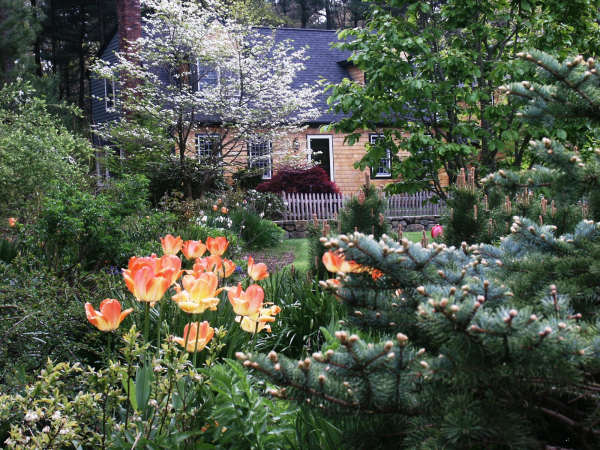Sustainability is the hot new buzzword in the landscape world. What does it mean? The dictionary says…
1) able to be maintained
2) maintaining ecological balance Sure, anything you plant can be maintained at a cost. The key to sustainability is managing the level of maintenance, so it isn’t overwhelming on your back or pocketbook. The built landscape will always require some attention, but it should be limited.
The New England green industry is a giant with over 4 billion dollars in revenues. Of that huge number over 2 billion is generated in Massachusetts alone. How is that possible?
Let me ask you this, do you add mulch to your landscape every year? Why?
This practice of adding mulch every spring feeds an unsustainable approach to soil, plants and resource management. Mulching has gained huge momentum, fed the growth of numerous companies, and done nothing to feed or support soil. It isn’t that mulch itself is bad – the idea is to emulate the woodland duff layer naturally occurring in nature. Regular landscape practices suggest we clean up all leaves and twig litter, so the source of duff is gone. Mulching puts it back. However, layer upon layer of mulch (especially low grade, dyed wood) does not decompose, or add biology to the soil. In fact it may even stifle biology over time.
Try this…
In the spring walk through your gardens with a cultivator and scratch the mulch layer. It may look ratty on the surface, but the under layer will be rich and partly decomposed. Go through and fluff that mulch up. Go over the area with a rake to smooth out the newly turned mulch layer. This effort will be refreshing and healthy for your body and save you some money heading into a new season of gardening.
Happy Gardening





Leave a comment